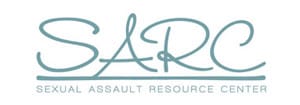Reclaim Reclama 2025 Live
Reclaim/Reclama 2025 is SARC’s annual art magazine featuring the works of people across Oregon who have been impacted by sexual violence.
Reclaim/Reclama 2025 is SARC’s annual art magazine featuring the works of people across Oregon who have been impacted by sexual violence.
The Sexual Assault Resource Center of Oregon invites you to join us for the second annual Reclaim/Reclama LIVE on Wednesday, April 9th from 5:30-8:00pm at the Jackson Bottom Wetlands Nature Center in Hillsboro, Oregon.
Reclaim/Reclama 2025 is SARC’s annual art magazine featuring the works of people across Oregon who have been impacted by sexual violence.
With the 2024 election right around the corner, or the election results having just come in (depending on when you’re reading this), survivors of sexual violence may be experiencing worry, anxiety, and a perception of threats to their human rights and identity.
Reclaim/Reclama 2024 is SARC’s annual art magazine featuring the works of people across Oregon who have been impacted by sexual violence.
Attend this free virtual presentation on the dynamics of hookup culture, online dating, and learn how to engage in them in safe and healthy ways!
As students, we expect educational institutions to be a safe haven where we can freely learn, grow, and thrive. Unfortunately, the reality is far from what we imagine.
Picture this: it’s the start of a new school year, and you’re sitting in your first sex education class. You’re listening to the teacher drone on about the birds and the bees, but as the lesson progresses, you start to realize that something is missing.
Reclaim/Reclama 2023 is SARC’s annual art magazine featuring the works of people across Oregon who have been impacted by sexual violence.
Here at SARC we get to be in peoples’ lives in unique ways. We get to hear peoples’ most vulnerable stories, their heartache, their fears.
For over 40 years, SARC’s dedicated staff and volunteers have been providing crisis intervention and ongoing support services to folks who have been impacted by sexual violence. Crisis intervention, including over the phone support and in-person response, is available 24 hours a day, 365 days a year. Our operations are funded through government grants and generous donations from private foundations, companies, and individual donors, so that we may always offer our services to clients at no charge.
Sexual Assault Resource Center
735 SW 158th Ave #100
Beaverton, OR 97006
Office: 503-626-9100
SARC Mailing Address
735 SW 158th Ave #180
Beaverton, OR 97006
The Sexual Assault Resource Center (SARC)- Oregon operates its program, services and activities in compliance with federal nondiscrimination laws. No person shall, on the basis of race, color, national origin (including limited English proficiency), disability, religion, sex, gender identity, sexual orientation, or age, be excluded from participation in, be denied the benefits of, or be otherwise subjected to discrimination under any of our programs.
This site uses cookies. By continuing to browse the site, you are agreeing to our use of cookies.
Accept settingsSettingsWe may request cookies to be set on your device. We use cookies to let us know when you visit our websites, how you interact with us, to enrich your user experience, and to customize your relationship with our website.
Click on the different category headings to find out more. You can also change some of your preferences. Note that blocking some types of cookies may impact your experience on our websites and the services we are able to offer.
These cookies are strictly necessary to provide you with services available through our website and to use some of its features.
Because these cookies are strictly necessary to deliver the website, refusing them will have impact how our site functions. You always can block or delete cookies by changing your browser settings and force blocking all cookies on this website. But this will always prompt you to accept/refuse cookies when revisiting our site.
We fully respect if you want to refuse cookies but to avoid asking you again and again kindly allow us to store a cookie for that. You are free to opt out any time or opt in for other cookies to get a better experience. If you refuse cookies we will remove all set cookies in our domain.
We provide you with a list of stored cookies on your computer in our domain so you can check what we stored. Due to security reasons we are not able to show or modify cookies from other domains. You can check these in your browser security settings.
We also use different external services like Google Webfonts, Google Maps, and external Video providers. Since these providers may collect personal data like your IP address we allow you to block them here. Please be aware that this might heavily reduce the functionality and appearance of our site. Changes will take effect once you reload the page.
Google Webfont Settings:
Google Map Settings:
Google reCaptcha Settings:
Vimeo and Youtube video embeds:
You can read about our cookies and privacy settings in detail on our Privacy Policy Page.
Private: Privacy Policy